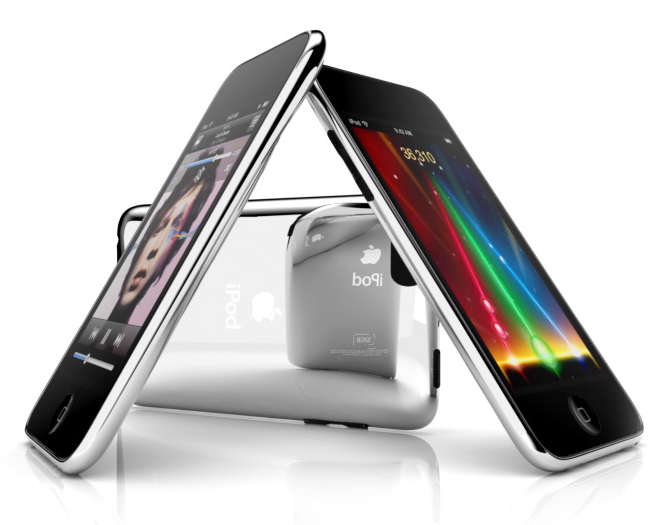Low-power 802.11n coming to next-gen Apple iPhone, iPod touch

Wireless radio component specifications contained within beta distributions of iPhone 3.0 firmware reveal support for a new chip enabling low power 802.11n that's bound for Apple's third-generation iPod touch, and by extension, the next iPhone.
AppleInsider is reporting that the version of the existing Broadcom chip that supplies WiFi and Bluetooth on existing models adds new support for 802.11n features, including the ability to find and join 5GHz networks, according to resource files for the device.
Current iPhone and iPod touch models only support 5GHz 802.11a networks or 2.4GHz 802.11b/g networks, forcing users who want the top speed of 802.11n -- available on the latest crop of MacBooks -- but compatibility with 802.11b/g networks to set up a 2.4GHz compatible network.
The compromise forces the wireless network to deal with interference on a crowded 2.4GHz band.
Support for 802.11n in the next-gen iPhone and iPod touch models would also give the devices a channel bonding (using two channels at once to double the top reception speed) and MIMO (multiple-input, multiple-output) kick in the proverbial pants.
Other features related to 802.11n include, according to AppleInsider:
- Space Time Block Coding (STBC), which sends the same data across multiple antennas for redundancy against radio interference;
- Short Guard Interval (SGI), which increases the data rate by squeezing out shorter padding intervals;
- A-MPDU, the aggregation of multiple MAC-level service data units;
- Block Ack, which increases efficiency by transmitting multiple data frames followed by only one acknowledgement frame in a transmission block;
- Greenfield mode, the increased efficiency gained by dropping 802.11a/b/g backward compatibility;
- RIFS, reduced interframe spacing, which minimizes unused radio dead time by cutting the interval time between sent packets.
As expected, power management is also important in the next generation, and the new devices are set to have a special integrated power management unit and a shared Bluetooth and WiFi receive signal path, which "eliminates the need for an external power splitter while maintaining excellent sensitivity for both Bluetooth and WLAN," AppleInsider reports.
Maybe, just maybe, that means that Wi-Fi and 3G on the iPhone and iPod touch won't crawl.
